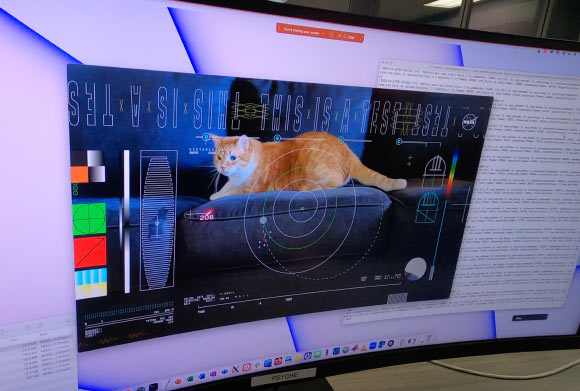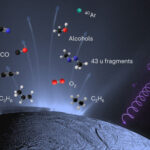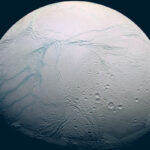A 15-second ultra-high-definition video, featuring a cat named Taters, was streamed via laser from a record-setting 31 million km (19 million miles, or about 80 times the Earth-Moon distance) away by NASA on December 11, 2023. It was part of the technology demonstration known as Deep Space Optical Communications (DSOC), which is attached to NASA’s Psyche spacecraft traveling to the asteroid belt between Mars and Jupiter. Graphics superimposed over the cat illustrate several features from the tech demo, such as Psyche’s orbital path and technical information about the laser.
“This accomplishment underscores our commitment to advancing optical communications as a key element to meeting our future data transmission needs,” said NASA Deputy Administrator Pam Melroy.
“Increasing our bandwidth is essential to achieving our future exploration and science goals, and we look forward to the continued advancement of this technology and the transformation of how we communicate during future interplanetary missions.”
The demo transmitted the 15-second test video via a cutting-edge instrument called a flight laser transceiver.
The video signal took 101 seconds to reach Earth, sent at the system’s maximum bit rate of 267 megabits per second (Mbps).
Capable of sending and receiving near-infrared signals, the instrument beamed an encoded near-infrared laser to the Hale Telescope at Caltech’s Palomar Observatory in San Diego County, California, where it was downloaded.
Each frame from the looping video was then sent ‘live’ to NASA’s Jet Propulsion Laboratory (JPL) in Southern California, where the video was played in real time.
The laser communications demo, which launched with NASA’s Psyche mission on October 13, is designed to transmit data from deep space at rates 10 to 100 times greater than the state-of-the-art radio frequency systems used by deep space missions today.
As Psyche travels to the main asteroid belt between Mars and Jupiter, the technology demonstration will send high-data-rate signals as far out as the Red Planet’s greatest distance from Earth.
In doing so, it paves the way for higher-data-rate communications capable of sending complex scientific information, high-definition imagery, and video in support of humanity’s next giant leap: sending humans to Mars.
A computer screen shows Taters the cat in a still from the first high-definition streaming video to be sent via laser from deep space, as well as the incoming data stream delivering the frames from the video. Image credit: NASA.
“One of the goals is to demonstrate the ability to transmit broadband video across millions of miles. Nothing on Psyche generates video data, so we usually send packets of randomly generated test data,” said Dr. Bill Klipstein, the tech demo’s project manager at JPL.
“But to make this significant event more memorable, we decided to work with designers at JPL to create a fun video, which captures the essence of the demo as part of the Psyche mission.”
Uploaded before launch, the ultra-high definition video features an orange tabby cat named Taters, the pet of a JPL employee, chasing a laser pointer, with overlayed graphics.
The graphics illustrate several features from the tech demo, such as Psyche’s orbital path, Palomar’s telescope dome, and technical information about the laser and its data bit rate. Tater’s heart rate, color, and breed are also on display.
“Despite transmitting from millions of miles away, it was able to send the video faster than most broadband internet connections,” said Dr. Ryan Rogalin, the project’s receiver electronics lead at JPL.
“In fact, after receiving the video at Palomar, it was sent to JPL over the internet, and that connection was slower than the signal coming from deep space.”
“JPL’s DesignLab did an amazing job helping us showcase this technology — everyone loves Taters.”




